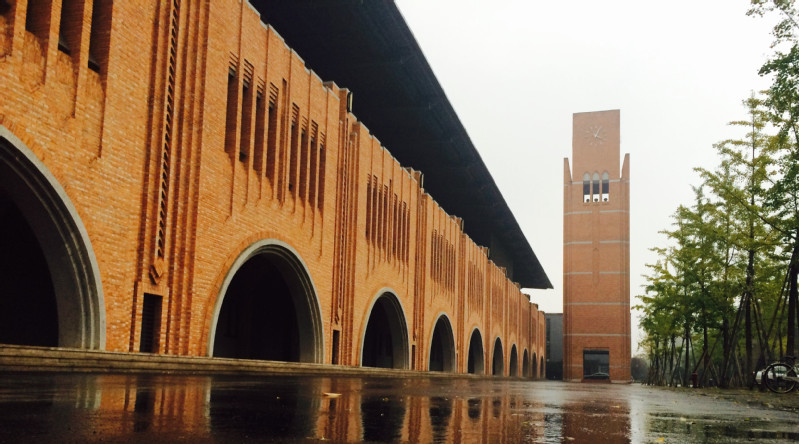
The origin of the Experiment Center of Civil Engineering and Hydraulic Engineering in Zhejiang University dates back to the Laboratory of the Department of Civil Engineering founded in 1927, which was only equipped with the initial surveying and material testing apparatuses. In 1929, the laboratory was equipped with a versatile testing apparatus. Meanwhile, the hydraulic laboratory was prepared, and it equipped with a full set of hydroelectric equipment in 1935. Upon the completion of the nationwide recombination of universities and colleges in 1953, the experimental conditions of the Department of Civil Engineering received prominent supplement and development, gradually establishing Soil Mechanics Lab, Hydraulics Lab, Building Materials Lab, Construction Lab, Surveying Lab, Structural Lab, and so on. In the 1960s, the Nuclear Blast Modeling Laboratory (i.e., the NO. 400) was set up, and the relevant laboratory instruments have a considerable influence throughout the country. In the early 1980s, the structural testing hall was newly built. In the early 1990s, the hydraulic testing building was also newly built. Then the experimental conditions have been under continuous improvement, particularly from the late 1990s, when with the sustainable funding of the key discipline funds of the National 211 Project, and the science and technology innovation platform funds of the 985 Project. Along with the construction of the Zijingang Campus, the laboratory developed by leaps and bounds. In the year of 2003, to get an overall management of the experimental sources in the college, the Experimental Center of Civil Engineering and Hydraulic Engineering was formed, and the experimental instruments became fully open to college inside and outside.
To date, the total area of the experimental center is approximately 30000 m2, and the equipment asset is about 180 million RMB. It consists of multiple professional laboratories, mainly including Geotechnical Engineering Lab, Structural Engineering Lab, Hydraulic Engineering Lab, Building Material Lab, Surveying Lab, Pavement and Bridge Engineering Lab, Wind Tunnel Lab, Pipeline Network Hygiene Lab, Water Quality Analysis Lab, Ocean Engineering Lab, BIM Lab, Building Energy Efficiency and Indoor Environment Detection Lab, which essentially meets the experimental requirements of teaching and science research of majors in Civil Engineering, Hydraulic Engineering and Transportation Engineering in Zhejiang University. The center has many advanced equipments, such as the centrifuge of ZJU400, the large-scale ground and slope model testing system, the high-speed railway subgrade dynamic testing system, the advanced stress-path dynamic triaxial apparatus, the spacial structural node loading system, the combined large-scale structure dynamic loading system, the high-performance material fatigue testing system, the field emission environmental scanning electron microscopy (SEM), the high resolution 3D computer tomography (CT) system, the multifunctional wind flow water tank and pond. Contemporarily, the center has become the education and experimental base of the national engineering mechanics primary courses, the national-level teaching demonstration center of mechanical testing, the national-level virtual simulation experiment teaching center of Civil Engineering, the civil and hydraulic experiment teaching demonstration center in Zhejiang province, the soft soil and geoenvironmental key laboratory of the Ministry of Education, Zhejiang provincial key laboratory of space structures, Zhejiang Key Laboratory of Drinking Water Safety and Distribution Technology.
The centre now possesses 15 full-time experimental technicians, among which 3 people serve university-level key positions, 6 people have senior professional post, 4 have doctorate, and 10 have Master's degree.




